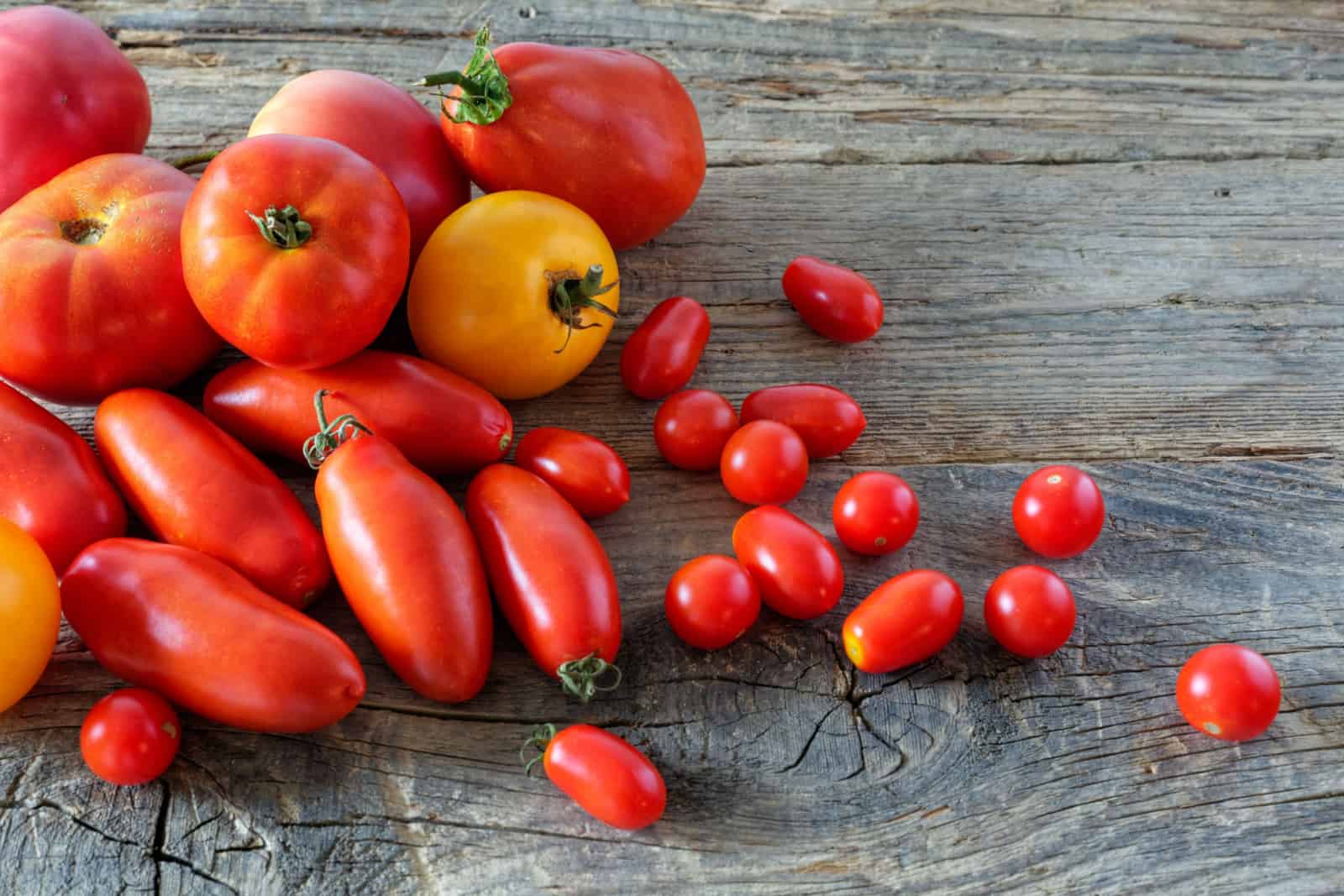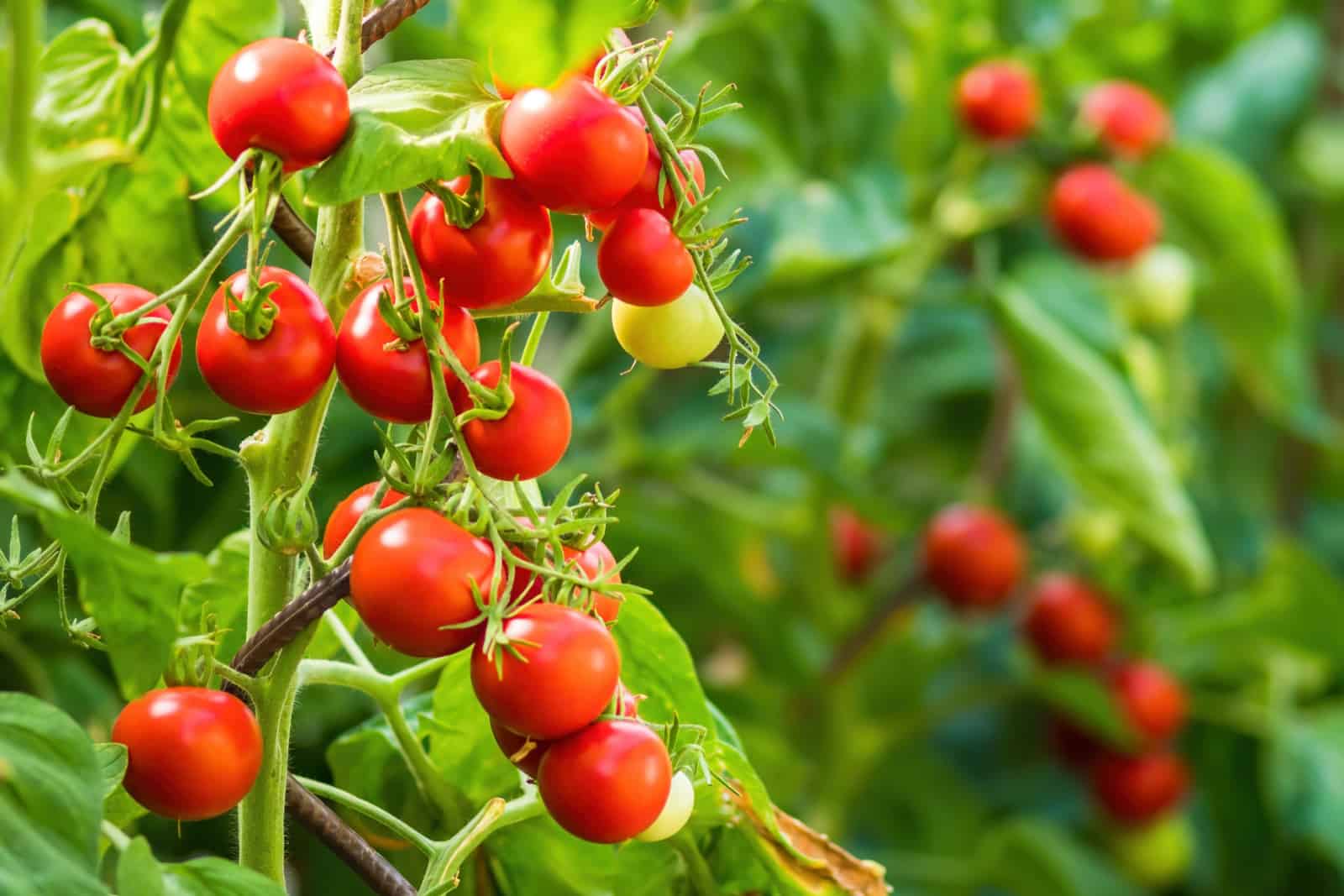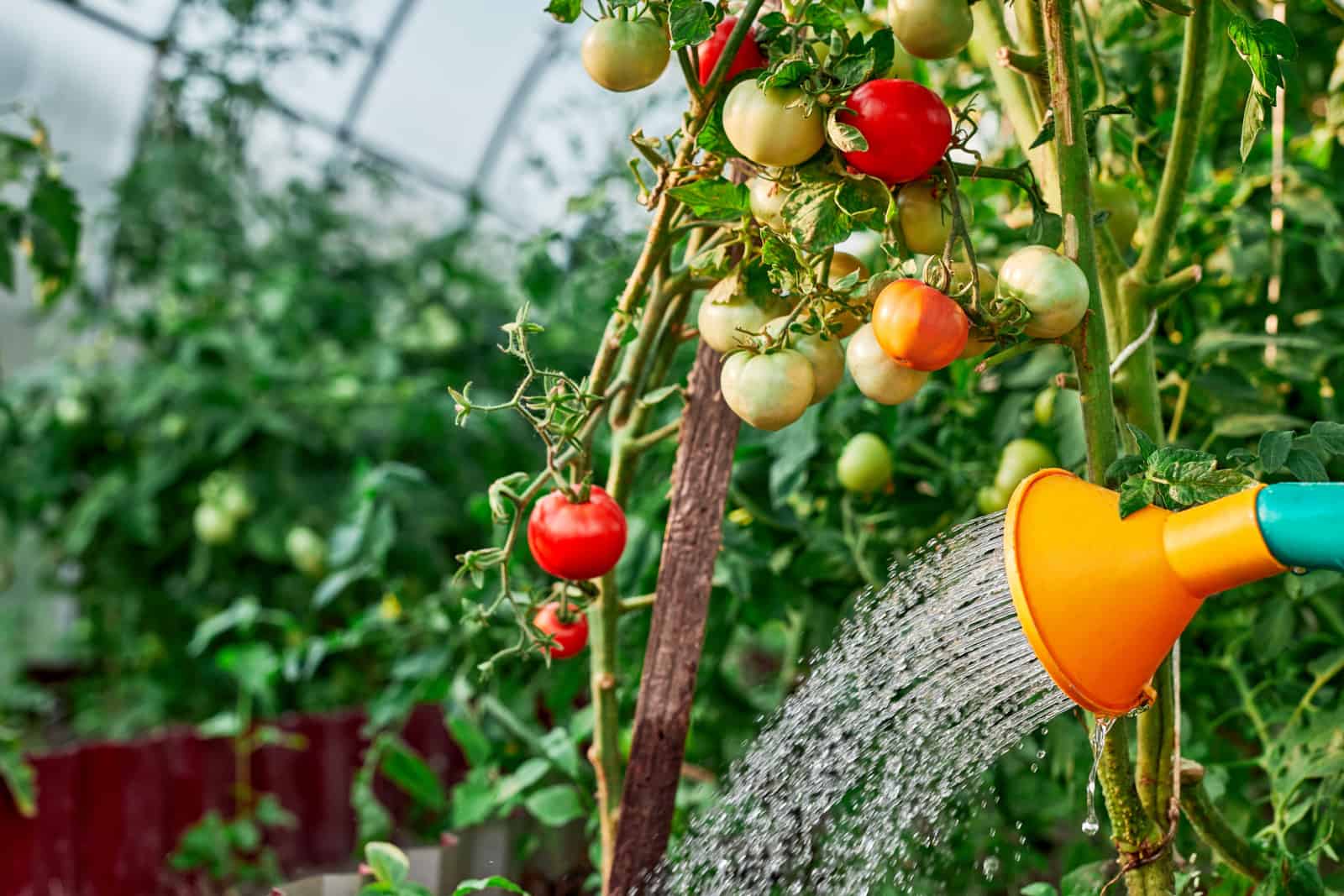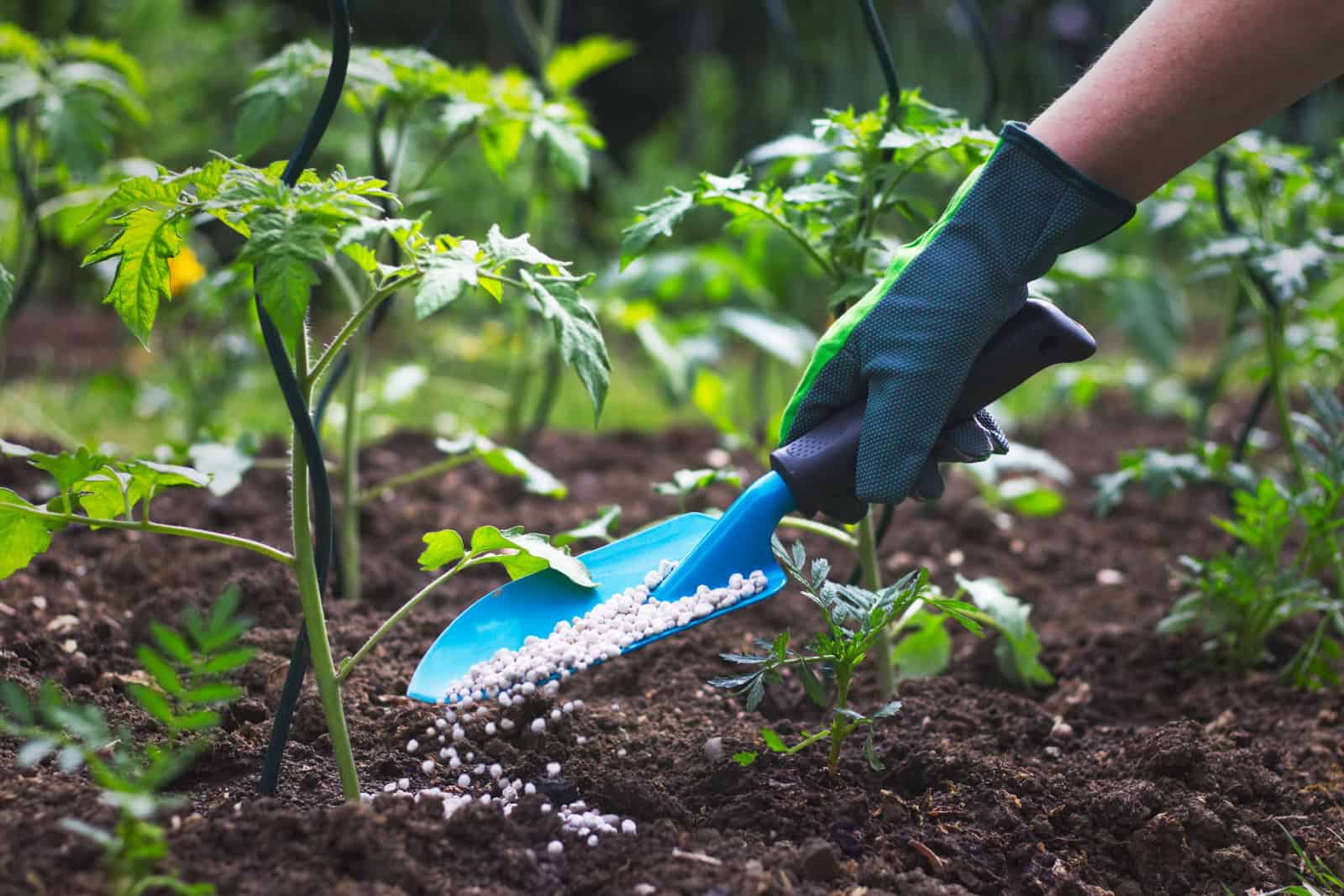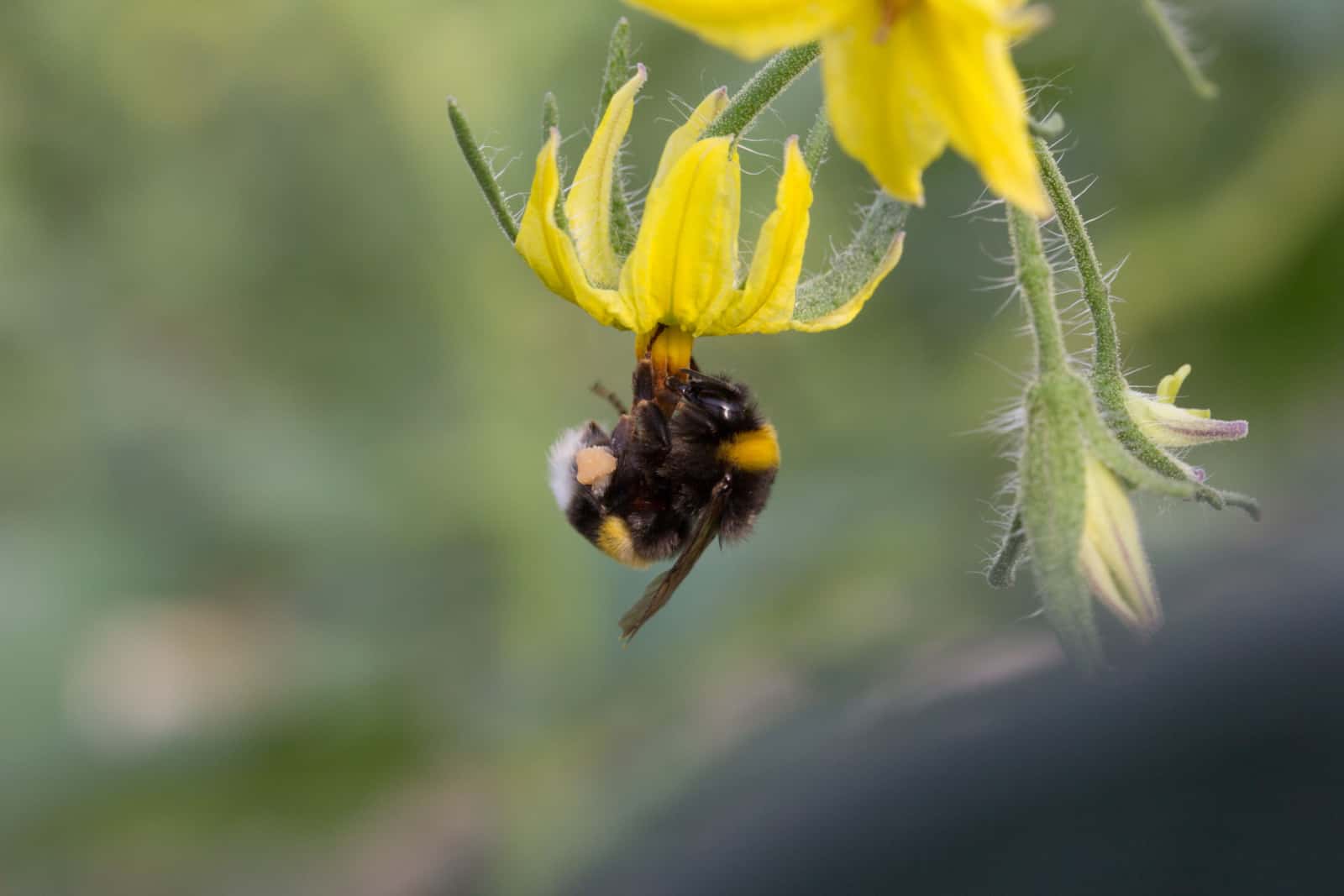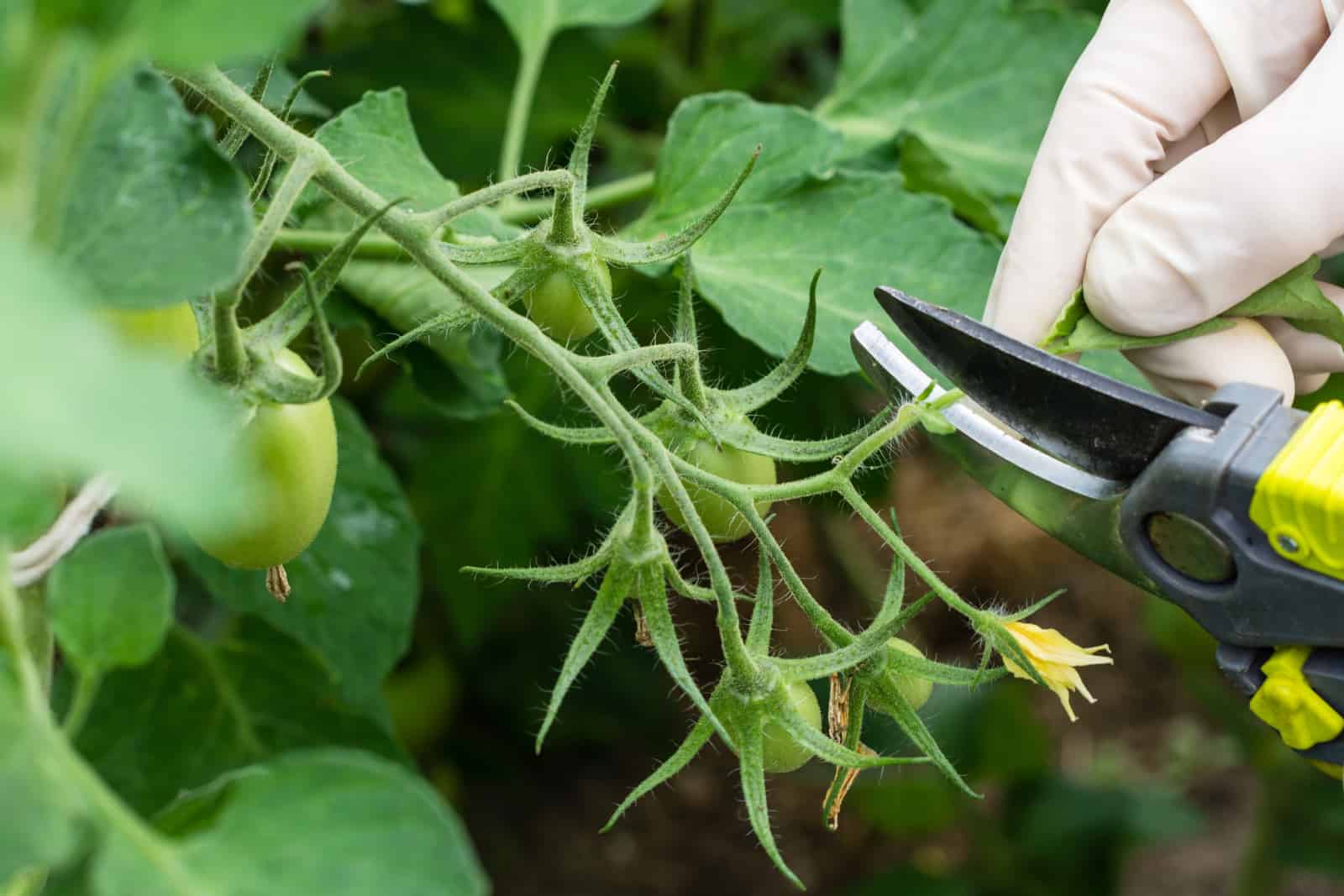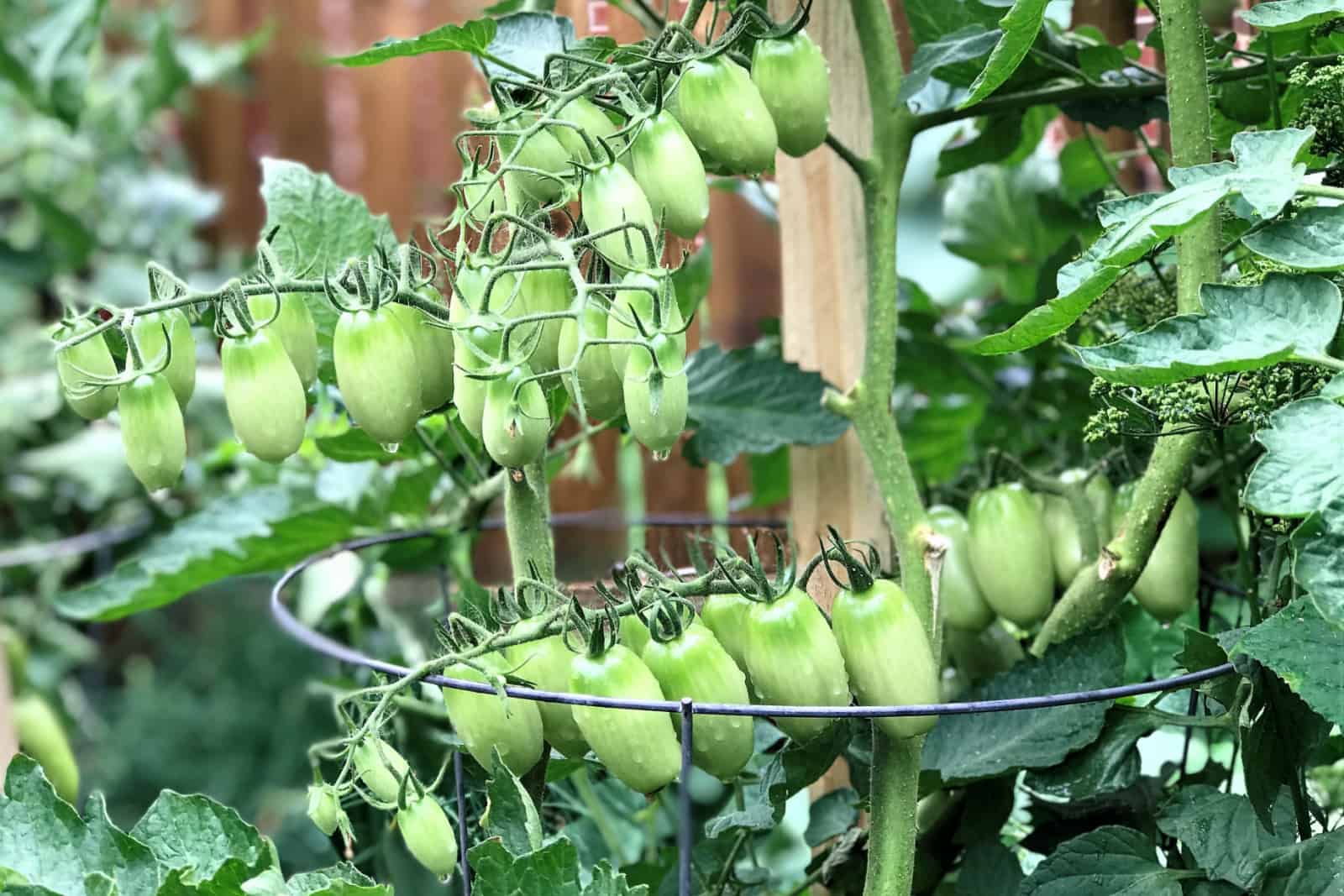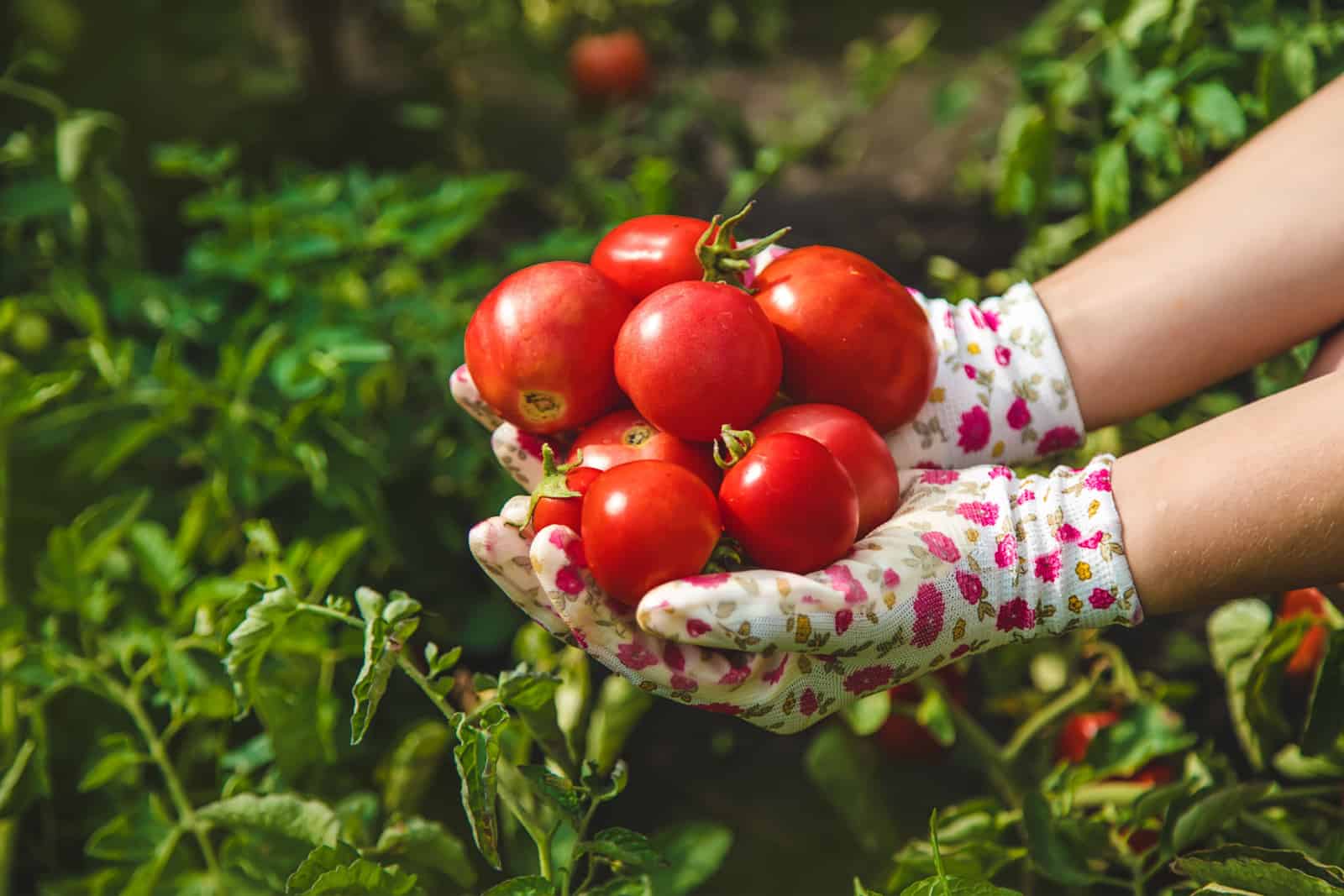If you’re worried about your tomato yield this season, I understand your concern. You put in a lot of time and effort, and many things can go wrong.
Well, I’m here to help you! I’ll show you 8 easy methods to get more tomatoes than you ever thought possible.
Let’s unleash your tomato growing potential!
1. Choose The Best Tomato Varieties For High Yields
When you look at pictures of tomatoes on seed packages, you’ll notice many varieties. They differ in size, shape, and color, and if you enjoy eating tomatoes, I’m sure you already have a favorite.
Not so long ago, gardeners didn’t really have the choice to cultivate specific varieties and had to choose depending on the climate and availability.
Nowadays, you can purchase many varieties and hybrids with great yields that will thrive in your area.
Additionally, you can choose varieties according to the length of their harvesting season or days to maturity.
In the table below, you’ll find 5 tomato varieties with high yields.
[table id=725 /]
Select a suitable variety and let’s find a perfect location!
2. More Sun = More Tomatoes
These are sun-loving veggies and if you want a high yield, the first thing you need to do is select a place in your garden where the tomatoes can get a lot of direct sunlight.
Your tomatoes will have enough energy to produce juicy and delicious fruit.
Full sun encourages tomatoes to generate more flowers faster, which is the main reason they will be ready for harvest sooner in sunnier areas.
Figure out which spot in your garden is the best for tomatoes, and we’ll now learn how to water them.
3. Keep Your Tomatoes Hydrated
One thing tomato plants hate is shallow watering. Water must reach the roots so they establish themselves deep in the ground.
As far as watering frequency is concerned, you’ll most likely need to water twice a week. However, the watering schedule depends on many factors, such as the tomato growth stage, soil, and temperature.
If your tomatoes are still young (newly transplanted), water them daily for about 10 days.
Water your tomatoes more often if you grow them in raised beds or containers.
Now your tomatoes have enough light and water, so it’s time to learn which nutrients they need.
4. Fertilize
A nutrient-rich soil amended with water-retaining materials works best for tomatoes. However, to prevent excess water accumulation in the soil, you should add free-draining materials.
Compost and worm castings are often used to give tomatoes more nutrients.
Tomatoes need 3 macronutrients for healthy development: nitrogen, phosphorus, and potassium. Each of these nutrients is responsible for the development of specific tomato plant parts.
For instance, phosphorus plays a major role in root and fruit production, and this nutrient is the most important one when it comes to tomato plants.
Nitrogen will enhance leafy growth, whereas potassium will help your tomatoes develop into robust plants.
You need to add a fertilizer rich in phosphorus. The best organic fertilizers for tomatoes are bone meal and ground rock phosphate.
Add these materials after you dig a hole for your tomatoes. Alternatively, mix them in the soil once your tomatoes start generating flowers.
If you decide on store-bought fertilizer, I recommend fertilizers with an NPK ratio of 5-10-5.
Use Foliar Sprays
Using foliar sprays on tomato plants is an effective way to provide access to macronutrients.
The essential thing is to go with sprays that don’t contain chemicals. No one wants any chemicals on their harvested fruit!
You’ll get amazing results if you make tea from well-rotted compost. Dilute it before use and your tomatoes will have a lot of nutrients without risk of burning.
5. Assist Pollination
You may have heard that tomatoes are self-pollinating veggies. This statement is 100% true but you need to do a couple of things to be on the safe side and give your tomato blooms a head start.
Shake The Flowers
Kinda weird advice, right? Well, this method actually works.
Yes, the flowers of this veggie contain both female and male parts, and shaking them can assist with pollination. This is an excellent way to encourage your tomatoes to start producing their delicious fruit!
Attract Pollinators
There’s nothing better than pollinators in your home garden. Every gardener will tell you to do everything you can to attract pollinators.
One of the oldest and most effective methods is companion planting. Consider planting some tomato companions such as marigolds or nasturtiums.
Don’t Use Pesticides
Pests are a nightmare for every gardener; they invade our houseplants, outdoor flowering plants, and fruits and veggies.
If they invade your veggie garden and tomatoes, the yield can be completely destroyed.
However, don’t use pesticides as soon as you spot pests. The main problem is that pesticides also repel or kill pollinators. The truth is that you will get rid of pests quickly, but losing pollinators will be a big price to pay.
Another problem with pesticides is that they contain harmful substances and even if your pollinators succeed in their quest, your fruit won’t be chemical-free.
The good thing is that there are many natural ways to control pests during flowering. For instance, neem oil, alcohol, or sprays made of garlic and citrus can all help you remove or repel pests from your garden.
6. Prune
If this isn’t your first time growing tomatoes, you may have noticed that they produce a lot of new growth. This is a good thing because only healthy plants generate new growth.
However, our goal is to get fruit, not just branches and leaves. Pruning will help you maintain the vigor and health of your tomatoes, and help them focus their energy on fruit production.
Indeterminate and determinate tomato varieties have different growth habits, so their pruning requirements are different. Let’s see the rules for each.
Pruning Determinate Tomatoes
The general rule for pruning these types of tomatoes is, do not prune! Wait, what? Well, these tomato varieties develop into bushy plants and once they reach maturity, they will stop growing.
If you prune them, you risk limiting their fruit production, and no one wants that.
Dead or damaged leaves may appear from time to time. Don’t be afraid to remove them because it won’t affect fruit production in any way.
Pruning Indeterminate Tomatoes
The situation is different when it comes to indeterminate varieties. They’ll keep growing and focus their energy on producing more branches and leaves unless you prune them.
When pruning, leave approximately 3 stems on each plant to encourage them to produce more fruit. New suckers will keep emerging from the leaf nodes so you should constantly prune them.
You won’t harm your tomatoes even if you remove top growth when the plant grows tall.
You shouldn’t over-prune, and make sure to leave enough foliage and branches to support healthy development
7. Support
After pruning comes structural support. Although there are some growers that skip this part, from my experience, structural support encourages higher yield.
The technique and type of structural support mainly depend on the variety and cultivars you grow.
For instance, growing bush tomatoes in cages or staking them has proven to be an excellent technique for these varieties.
On the contrary, if you cultivate indeterminate varieties, bear in mind they need stronger support. Wire fencing is one of the best support techniques for these varieties.
8. Know When To Harvest
We start harvesting our tomatoes once they are fully ripe. This is completely normal, but you can actually increase the yield if you harvest on time.
What does that mean? You should start picking your tomatoes a little bit earlier. A common technique among experienced gardeners is picking tomatoes as soon as they form, i.e., start having blush hues.
Don’t worry, nothing will happen to your tomatoes if you employ this technique. Put them near a sunny window and enjoy the magic. They’ll ripen at room temperature and their flavor will be exactly the same.
In the meantime, birds won’t invade your tomato garden because they also like eating them when they’re fully ripe. Sorry birdies, not this time.
The essential thing is NOT to keep your tomatoes in the fridge, no matter what anyone says. Tomatoes kept in the fridge don’t taste the same!
Don’t forget to remove lectins from your tomatoes to get the healthiest fruit.
Final Thoughts
The secret behind high tomato yield is choosing the right variety, giving them enough sun, hydration, feeding, pollination, pruning, and support, and harvesting when they aren’t fully ripe.
It may sound complicated, but by following our guide, I’m sure you’ll have the best tomato yield ever!

